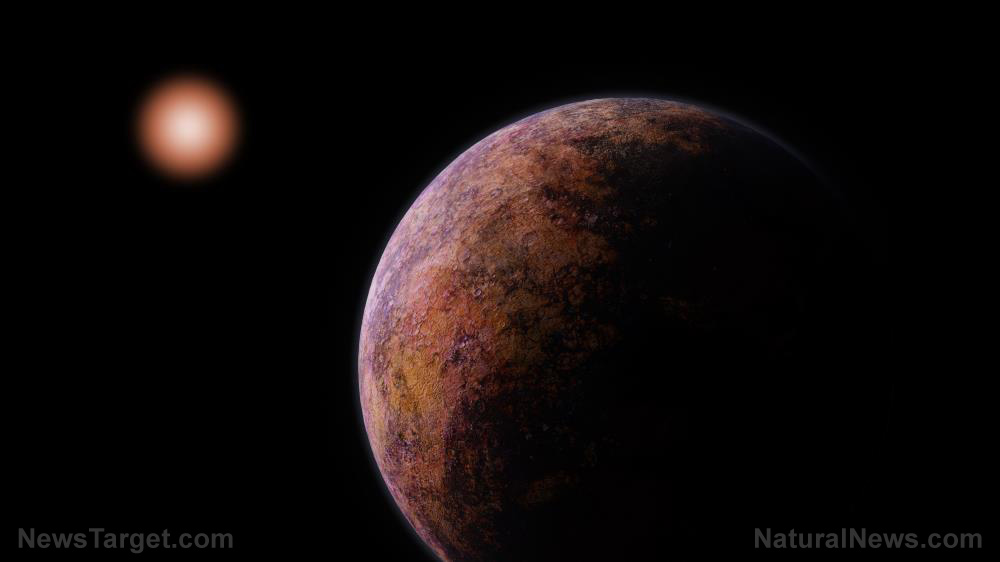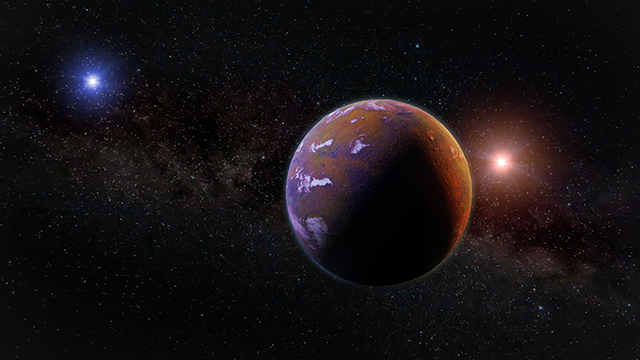Could this organic molecule be the building block of all life?
04/13/2019 / By Edsel Cook

The organic compound glycolonitrile was recently spotted within the stellar material surrounding a well-documented young star. Its presence in the early history of the star could help researchers determine just how it and other similar organic molecules ended up on Earth, thereby leading to the development of life as we know it.
Glycolonitrile is a prebiotic molecule, which is to say an organic molecule that predates the appearance of living organisms. It has the chemical formula HOCH2CN, which denotes its composition of carbon, hydrogen, nitrogen, and oxygen atoms.
Researchers from Queen Mary University of London (QMUL) and other academic institutes identified the presence of the molecule in the stellar cloud surrounding the protostar IRAS16293-2422 B. Located in the constellation Ophiuchus, it can be considered a younger version of the Sun. The similarities made it one of the better-studied protostars in the galaxy.
IRAS16293-2422 B is just one of many young stars that populate a star-forming region of space called Rho Ophiuchi. These stars are enveloped by thick clouds of cosmic dust and stellar gas, much like the one worn by the Sun as it slowly but surely shaped the Solar System into its current appearance. (Related: Sugar molecules exist in space, according to astronomers.)
The stellar material of a young Sun-like star contains organic compounds vital for lifeforms
The presence of glycolonitrile in a Sun-like protostar provides a huge clue regarding the development of our own Solar System a long time ago. Planets are formed from the stellar material left over from the birth of their parent star.
If the stellar material already contained organic compounds like glycolonitrile, then the planets made from those dust and gases would start off with a good amount of the ingredients needed to create simple lifeforms.
Glycolonitrile happens to be one of the important ingredients that can be synthesized into adenine, which is a building block for making DNA and RNA macromolecules.
DNA stores the genetic data of a living organism, while RNA codes, decodes, regulates, and expresses those genes during various biological functions. Together with protein, they are the macromolecules required for life.
“We have shown that this important pre-biotic molecule can be formed in the material from which stars and planets emerge, taking us a step closer to identifying the processes that may have led to the origin of life on Earth,” reported QMUL researcher Shaoshan Zeng, who published his team’s findings in the Monthly Notices of the Royal Astronomical Society: Letters.
IRAS16293-2422 B confirmed to contain not one, but two organic molecules
Zeng and his colleagues were not the only ones looking at IRAS16293-2422 B. They were part of an international effort of American and European researchers, and their primary instrument for the study was the powerful ALMA radio telescope in Chile.
The QMUL-led research effort used ALMA to scan the star-forming interstellar medium that surrounded IRAS16293-2422 B. The researchers went over the readings until they came across the distinct chemical signature of glycolonitrile. Then they evaluated the conditions of the locations where they found the organic molecule.
In addition, they created computer models of chemical reactions that could produce glycolonitrile in the interstellar medium. This allowed them to understand the chemical processes that might have been responsible for the appearance of the organic molecules in that region of space.
Earlier, another QMUL research team reported finding a similar organic molecule in IRAS16293-2422 B. They found an isomer of glycolonitrile called methyl isocyanate, which rearranges the same number of atoms and thereby exhibits different properties. The presence of these organic molecules suggests that the interstellar medium can produce compounds associated with life.
Sources include:
Tagged Under: alien life, astronomy, breakthrough, Chemistry, discoveries, glycolonitrile, macromolecules, Ophiuchi constellation, organic life, organic molecules, prebiotic molecules, protostar, research, Rho Ophiuchi, science, solar system, space exploration, stellar materials



















